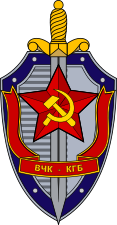Russia has always had a massive army. It currently has about 1,000,000 active members with another 2.5 million in reserve. Back during the February Revolution, however, it was even bigger. The Imperial Russian Army was roughly seven and a half million strong in 1917, most of whom were peasants. This huge organization underwent massive changes in just a short amount of time.
The first major changes within the Russian Army came with “Order No. 1”. Order No. 1 was a “harbinger of social revolution in the army.” (Freeze 277) This order set up elected committees from the enlisted personnel within the various levels of the army i.e. company, battalions, regiments and so forth. These committees had complete control over their unit’s weapons and they were told under no circumstances were they to give them to their officers. Personally, I can see a few problems with this arrangement but that is neither here nor there. Order No. 1 also gave off duty soldiers the same rights as their civilian counterparts. The last major change that came with Order No. 1 was the removal of honorifics that came with rank. No longer would officers be called things such as “Your Honor” or “Your Excellency” but rather “Mister Colonel” or “Mister General”.
What did this mean for the revolution and society as a whole? One of the first things that comes to my mind is that now the army can’t be used as a tool of repression. One of the rules that came with Order No. 1 is that the army will not follow orders that contradict the mission of the Soviet Party. This means the provisional government cannot order the army to come in and stop the revolution. Second, back then, just like today, the military is used as a sort of “testing grounds” for society. The introduction of committees into the Russian Army is the first step down the path that led to the massive bureaucracy found only in the Soviet Union. Also, the removal of honorifics in the army led to the eventual equality of everyone as “Comrade”. The changes that occurred in the Russian Army are the prelude to the greater changes that occur within the Soviet Union
Sources:
https://www.marxists.org/history/ussr/government/1917/03/01.htm
http://soviethistory.msu.edu/1917-2/revolution-in-the-army/
Freeze, Gregory L. Russia: A History. Oxford: Oxford University Press, 2009.
(A picture of Order No.1)
(http://soviethistory.msu.edu/1917-2/revolution-in-the-army/revolution-in-the-army-images/)

Thomas, I really enjoyed this post and liked how you focused on the military aspects and consequences of the revolution. I didn’t know all these details about the military changes, and it’s really interesting to see how these changes happening in society were reflected in the military. I think it would be interesting to see how military changes reflect societal changes throughout the evolution of the Soviet Union.
LikeLike
I really liked this post! I know we touched a little on this in class previously, I enjoyed how your post went more in depth with how these changes affected individuals in the military. We always think of military as having ranking officers that are honored as such. It’s interesting to look at a military where honorifics are eliminated and equality is embraced more-so than normal. I also like how you ended your discussion with the concept that these advances towards equality among military officers led to other changes within Russia as well.
LikeLike
I agree with Bree! You did a great job of adding onto class material to give us a better understanding of Order No. 1. I was stuck between making my blog post about this or about the Red Army and I am glad to see the additional information that I was interested in finding! With regard to honorifics, I think that the system of rankings that the United States military has implemented is a healthy middle ground between “your excellency” and the complete equality of “comrade.”
LikeLike
You have an interesting topic! I like the way you presented it and explained how the military changes might correlate to that of society. What I found based upon my own research is that the abolition of the formalities was even furthered with the complete abolishment of rank itself ( http://soviethistory.msu.edu/1917-2/red-guard-into-army/red-guard-into-army-texts/abolition-of-military-ranks-and-titles/ ). I thought this might be another interesting change that the military shows in relation to society under the Soviets.
LikeLiked by 1 person
I really appreciate the way you combine historical analysis with your own perspectives in ways that make it clear which voice you are using and when. Order No. 1 is so simple and so complicated. You’ve done a fine job of laying that out.
LikeLike
Can you please provide a source and identifying information for the featured image?
LikeLike
I really enjoyed your analysis of Order No. 1, Thomas. I had never thought of it before as the military being used as a testing ground for the bureaucracy (as you said) implemented within the Soviet Union moving forward. I do wonder how getting rid of the honorifics used to address officers, and the attempts to create a more balanced playing field and less formality overall, impacted the effectiveness and discipline of the Russian (and later) Soviet military forces?
LikeLike
When you stated “Personally, I can see a few problems with this arrangement but that is neither here nor there.” what did you mean? Are you saying that it is not your job to judge or cast your opinion ?
LikeLike
I like that you went into the effects that the order had on the military and on society in general, but I do feel that since you were going that route, you probably could have done a more in depth analysis. On the whole though, I thought was you were talking about was very interesting. Nice job :).
LikeLike
Overall, I really liked this post and think that you should definitely follow up with some more research on the topic. You were really able to layout the full extent of Order No. 1 and how it affected the overall populace of Russia. Keep it up!
LikeLike